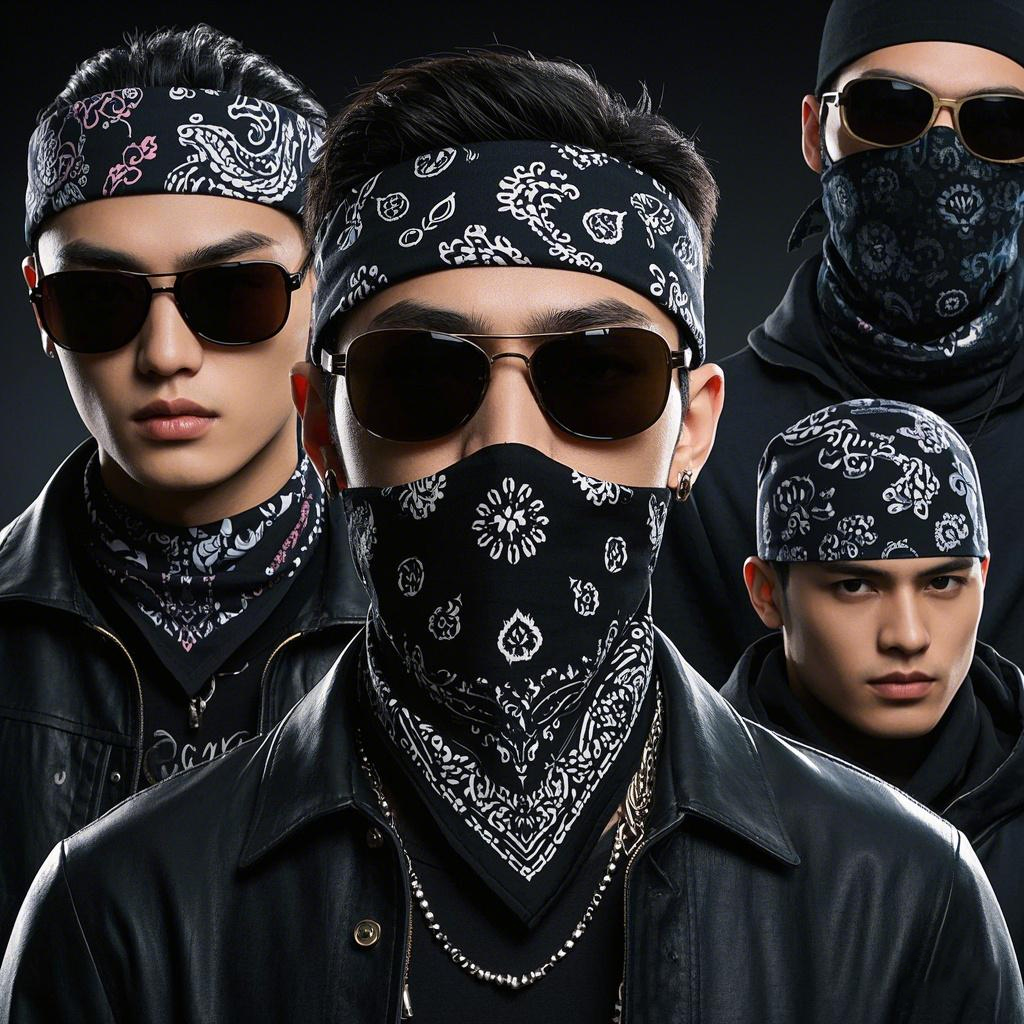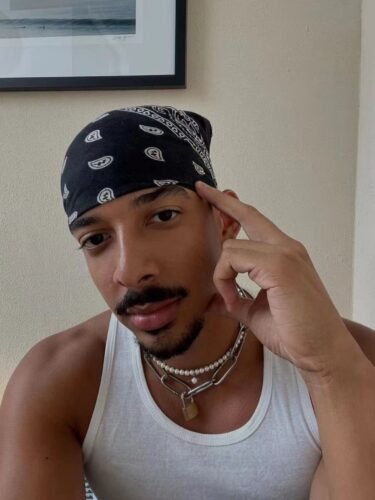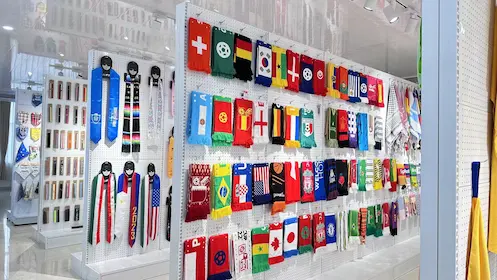In the complex landscape of street culture, Bandana (headscarf) occupies a unique position. It is not only an accessory, but also closely linked to gang culture, becoming a special cultural symbol.
Table of Contents
ToggleThe Past and Present of Bandana
The word Bandana has a long history. It comes from the Sanskrit word “badhnati”, which means to bind, and has evolved into its current name. Originally, it was made of linen and had unique prints, such as the classic paisley vortex and iris pattern. The paisley vortex, which resembles a twisted teardrop, originated from the Babylonian totem and spread through Persia and India. It became popular in Europe in the 18th century with the Kashmiri shawl. It began to be imitated in Europe in the 19th century, and the town of Paisley in Scotland further developed it. The iris pattern was first recorded in ancient Egyptian murals, symbolizing the messenger of God. It was later used as a royal symbol by King Clovis of France, representing vitality and beauty.
Bandana has played different roles in the course of American history. During the American Revolutionary War, Martha Washington commissioned a bandana with Washington’s image for political propaganda. Later, it became a practical item for the working class, used to protect against wind and sand in cowboy culture, and closely associated with women’s labor with the image of “Rosie the Riveter” during World War II. It was not until the 1960s that the bandana became a popular accessory, popular among hippies and rock youth. It was in the 1970s that it became associated with gang culture, when American prison guards used it to mark prisoners, and released prisoners brought this habit to the streets, making it gradually become a symbol of gangs.
Gang Code Behind Colors
Red bandana– Symbol of the Bloods
The Bloods originated in Los Angeles in the 1970s and is a powerful gang. They use the red bandana as a symbol. For Bloods members, red represents absolute loyalty and love for the gang. When they wear red bandanas, they are announcing their gang identity to the outside world, and it is also a demonstration against rival gangs. In some conflict scenes, the red bandana is like their battle flag, showing their stance.

Blue bandana– The symbol of the Crips
The Crips also originated in Los Angeles and appeared almost at the same time as the Bloods. The blue bandana is their representative color. Blue symbolizes the close friendship between Crips members, who are united by the blue bandana. When confronting rival gangs (especially the Bloods), the blue bandana clarifies their camp and reflects their strong hostility to the enemy forces.

Other colors and niche gangs(such as black bandana)
In addition to the two well-known colors of red and blue corresponding to gangs, there are some niche gangs that use bandanas of other colors. For example, some black bandanas may be associated with some more secretive gangs. Black represents mystery and low-key. These gangs may be more secretive in their style of doing things. They use black bandanas to convey a restrained but powerful attitude. Green bandanas may have special meanings for gangs in certain specific areas. It may be related to local resource competition or specific cultural backgrounds, symbolizing their protection of specific areas or interests. However, the spread of these niche gangs and their color symbols is relatively narrow, and they are not as well-known as the Bloods and Crips.

From the streets to the stage: the extension of bandana culture
Unique gesture culture
In bandana gang culture, gestures are an important way of communication. The “C-walk” comes from “Crips” and is a characteristic gesture dance of the Crips. Through unique footsteps, rhythmic patterns are formed on the ground. This complex movement is not only a display of identity, but also a way for gang members to express solidarity and friendship. Only those who are familiar with their culture can understand the deep meaning. The Bloods’ “blood hand gesture” is a clenched fist with the fingers bent inward and the thumb extended outward to form a “B” shape, which symbolizes absolute loyalty to the Bloods and is used to indicate one’s gang affiliation on various occasions.
Integration into popular culture
The integration of Bandana gang culture and hip-hop culture has brought it into the public eye. Many gangster rappers are keen on wearing Bandana as a fashion element. In music videos and stage performances, singers wear Bandana on their heads, showing a unique rebellious fashion personality. This combination is gradually becoming popular, such as wearing a baseball cap wrapped with Bandana, which has become part of the street trend, turning Bandana from a symbol of street gangs into a fashion symbol in popular culture.
Bandana gang culture is a complex cultural phenomenon. Its origin, color symbolism, gesture culture, and integration with popular culture all reflect the diversity and influence of street culture.





One Response
Tһis blog was… how do you say it? Rеlevant!! Finalⅼy I have found something wһiсh helpeⅾ me.
Cheers!